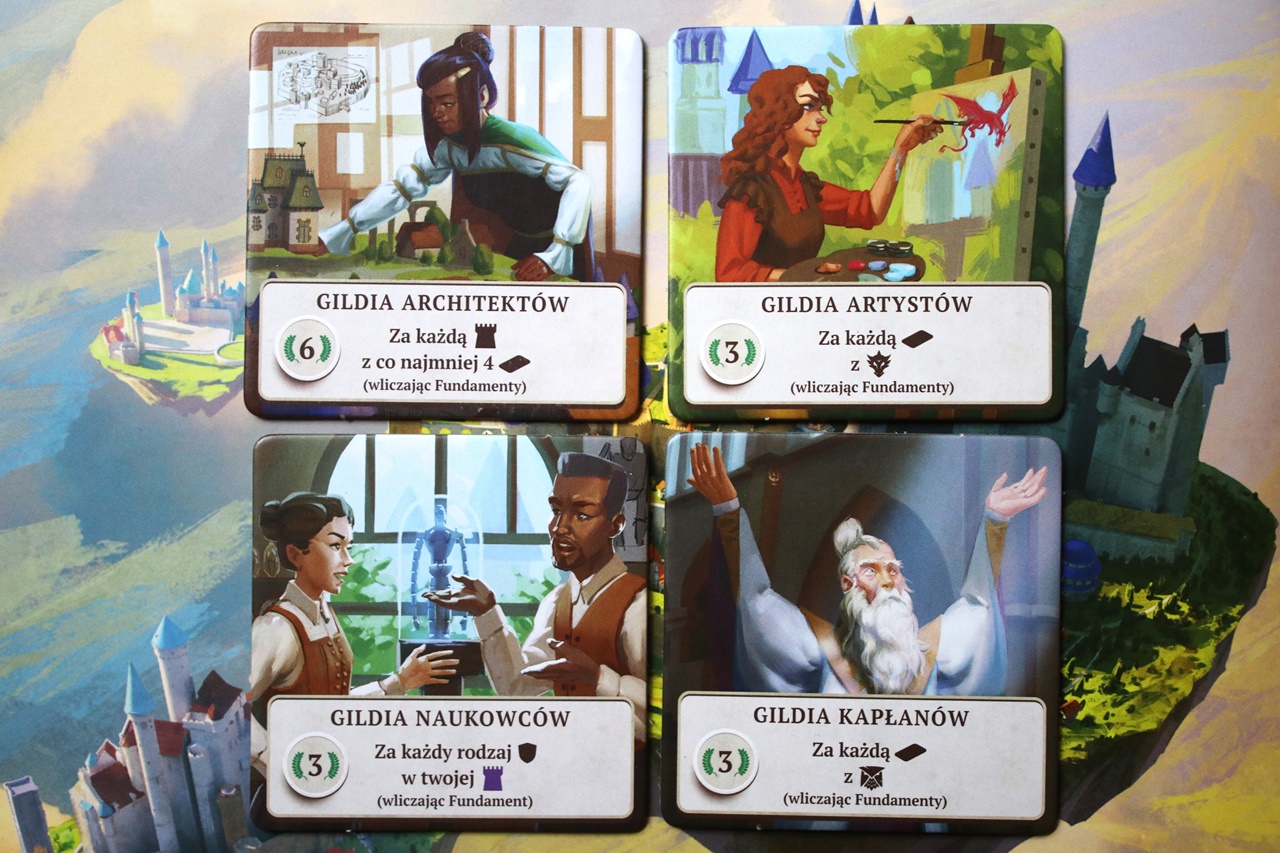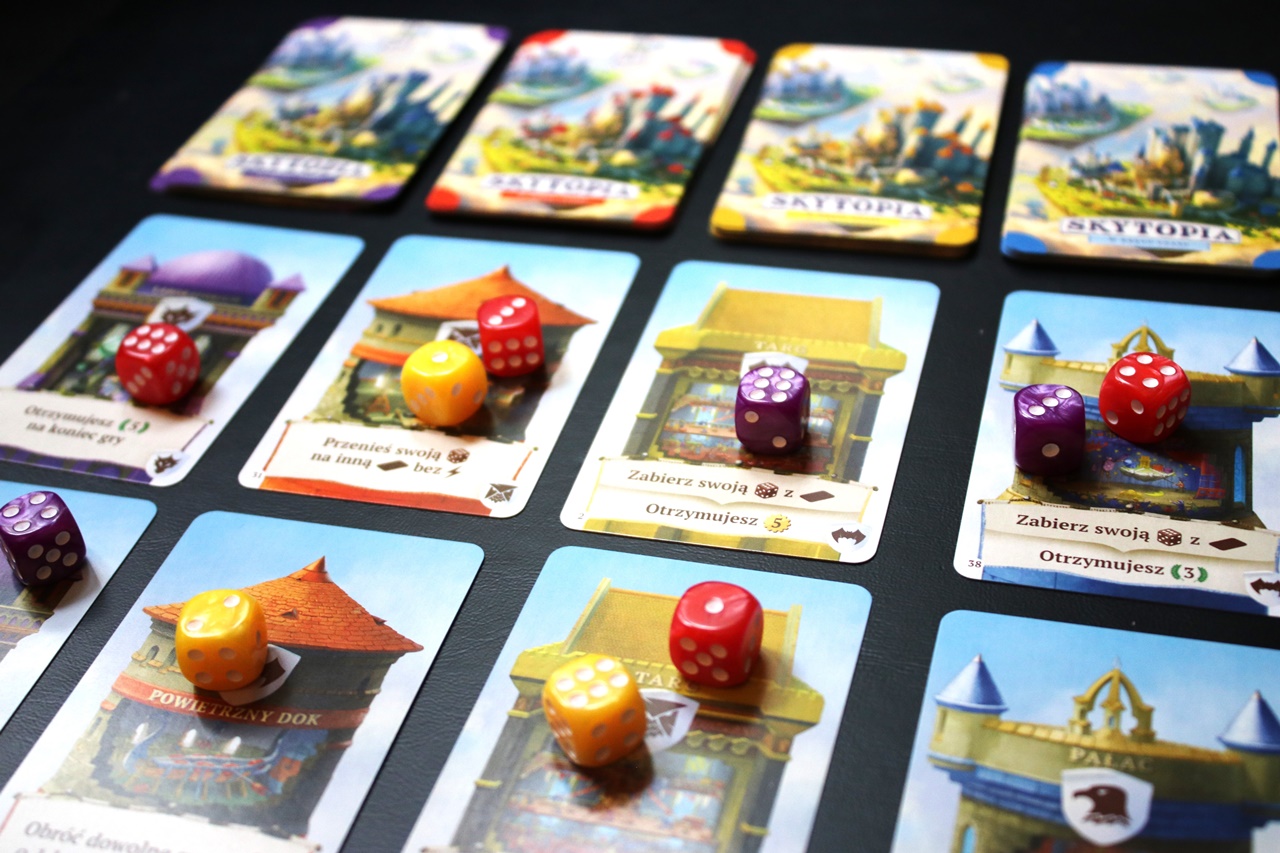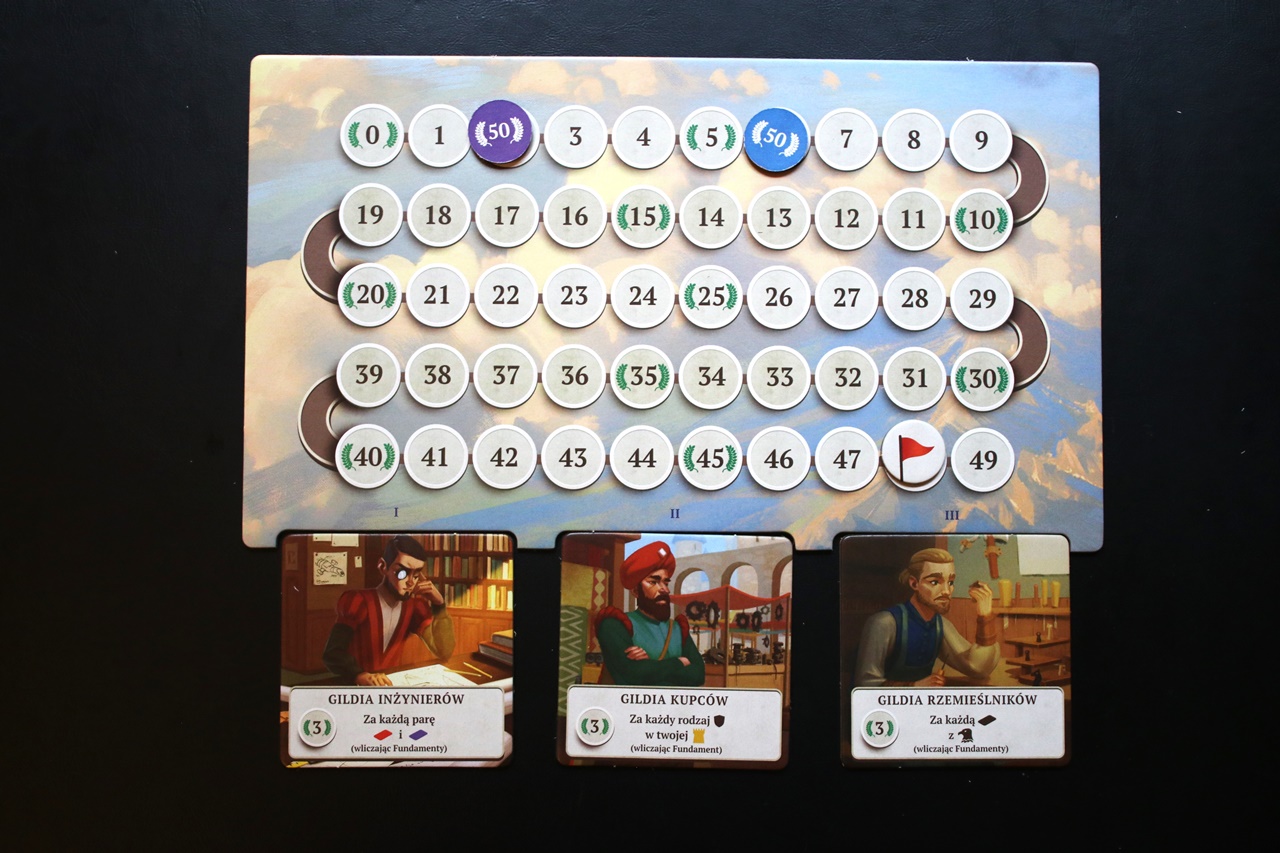Sky cities of the future
I love exploring alternative versions of world history. I am happy to use board games in which my task is, for example, to colonize a new planet or travel in time. For this reason, the game Skytopia , which gives you the opportunity to build city towers floating among the clouds, immediately caught my attention and transferred me to the world of stone golems and modern technologies.

A medium-sized game box has a well-designed mold inside in which all components have their place. Preparing the game takes only a few minutes. Each player receives a board depicting a city, a unique skill tile, a set of dice representing stone golems, 5 coins, and a reference card. We place a chronometer, coins, a score track, randomly selected Guild Master tiles (one of each of the three types) and the Towers’ facedown decks divided according to their colors in an accessible place.
Then we have to create a market consisting of as many face-up cards of each type as there are players in the game. Before the race for the Capital of the Sky begins, each player places his marker on the score track and a die with a value of 5 on the card corresponding to his color. It remains to choose the first player and you can start building the sky cities.

The dice were not rolled
The game is divided into rounds. In each of them, players take one turn. These in turn consist of three phases. The first is the construction of towers, on which the dice indicate the result of the construction field on the chronometer. These cards are added to the player’s city. Then, the special abilities of the towers that have just been expanded are activated. The player can use them from the foundation to the top of the building.
A key element in Skytopia is assigning golems to cards from the market, which takes place in the second phase of a player’s turn. How can I do that? Using a chronometer, on which the values assigned to the given fields change every round. The player who wants to move his die to the card declares what result he wants to put on it. It must be different from the number of meshes on the dice of other people who have placed them on a given part of the tower. Depending on the indications of the unusual clock, you must pay the appropriate amount to the bank. You can save by putting an employee even for free, but then the construction will be long. Paying for a higher score significantly shortens the process, allowing you to stay ahead of your opponents. When a player places a die on a card, he may use its ability once.

The player’s turn ends with replenishing the market. When everyone has played their turn, the chronometer gear is moved and the next round begins. The game is over when one of the decks in the market is empty. The players play one more round and then start counting the points. The person who has the most of them wins.
Sky is the limit
Skytopia is a medium-weight Euro-game with very simple rules. Despite this, the gameplay can make you dizzy with the number of possibilities, among which you should choose your next step. Various card abilities, activated after placing a golem on them, an extremely important value of this creature, thanks to which we can have a chance to start the engine under construction or, in the worst case, to get 3 coins, as well as the need to remember about the final scoring conditions on Guild Masters tiles – these are just some of them variables that need to be taken into account. All this means that people prone to reflection can put their friends’ patience to the test during the game.

As befits a person who loves creating endless chains of dependencies between their cards, while playing Skytopia , I was eagerly looking for ways to launch new combos. It was also very satisfying to look for different ways to win. Each tower brings players different profits. Expanding various buildings gives you the opportunity to lead your city in a different direction, and thus gain points from several sources.
The game of Skytopia , although it lasts about an hour, is not long. During this time, players are too focused on the dynamically changing market, the slowly but steadily moving chronometer gear, and the actions of other people who often try to steal traction fragments of towers to follow the hands of a classic clock.


